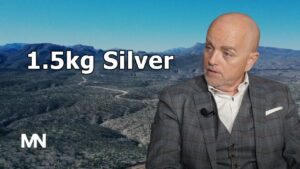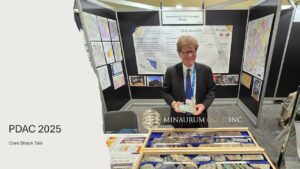Avino Silver and Gold Mines Ltd. (ASM: TSX.V, ASM: NYSE – MKT; “Avino” or “the Company”) is pleased to announce the results from a Technical Report on the Avino Property prepared by Tetra Tech (“Tetra Tech”), an independent engineering consultant commissioned by Avino. The Technical Report was filed on SEDAR on July 25, 2012, under the Company’s SEDAR profile.
The Technical Report on the Avino Property has been prepared in accordance with NI 43-101 Standards of Disclosure for Mineral Projects, Companion Policy 43-101CP and Form 43-101F1 and includes the following:
- A mineral resource estimate and preliminary economics assessment (PEA) on the oxide tailings; and
- Identification and discussion of the sulphide tailings as a target for exploitation, and the San Gonzalo and the Avino Veins as targets for further investigation.
Property Location
The Avino Property is located 82 km northeast of Durango, Mexico.
Mineral Resource Discussions
- Oxide Tailings – A mineral resource was estimated for the oxide tailings generated from prior historical mining operations, using ordinary kriging (OK) interpolation and uncapped grades. The assay values for this estimate are based on 28 drill holes, which were completed on the tailings by CMMA in 1990, and include 407.75 m of drilling and 383 assays of both gold and silver. The oxide tailings are estimated to contain a 2.34 Mt inferred mineral resource at a grade of 91.3 g/t silver and 0.54 g/t gold, with a 50 g/t silver cut-off. The entire resource is classified as an inferred mineral resource, based on the historical nature of the drilling (prior to the institution of NI 43-101 and associated quality assurance/quality control (QA/QC) requirements). Verification samples collected by Tetra Tech confirmed the presence of gold and silver mineralization at grades similar to those obtained in the original tailings drilling campaign and confirmed that the Mine’s lab assays are not materially different from those of external labs. It is Tetra Tech’s opinion that the oxide tailings sampling data are considered sufficient to support the purpose of the Technical Report and a current inferred mineral resource.
- Sulphide Tailings – The sulphide tailings cover a portion of the oxide tailings and are predominately derived from material sourced at depth from the underground workings. At this time, it is not clear what the real nature of the chemical difference between the two is, but they are distinctly different in color. In the absence of any definitive sampling data penetrating the depth of the pile, the sulphide tailings are an exploration target at best.
- San Gonzalo Vein – The San Gonzalo vein system is located 2 km northeast of the Avino Main Mine. It constitutes a strongly developed vein system over 25 m across, trending 300 to 325 degrees, dip 80 NE to 70 SW. The vein was mined historically and underground workings extend over an area approximately 150 m along strike and 136 m in depth. An historical mineral resource was estimated on the San Gonzalo vein and disclosed in 2009 by Dave Gunning of Orequest Consultants. As there have been the subsequent development of a ramp, bulk sampling, production, channel sampling and additional delineation drilling along the vein, these developments have effected a material change in the 2009 resource estimate. Tetra Tech is therefore of the opinion that the 2009 resource calculation can no longer be considered current, and thus there is no current mineral resource estimate for the San Gonzalo vein portion of the Property.
- Avino Main Vein (ET Zone) — The Avino Vein was mined during the 27 years of open pit and underground production prior to 2001. It is 1.6 km long and 60 m wide on the surface. The deepest level mined was the 2,070 level (330 m below the surface). There is no current mineral resource estimate for the Avino Vein. This vein is a target for future study.
Oxide Tailings PEA
Mineral Processing, Metallurgical Testing and Recovery Methods
Tetra Tech investigated gravity separation, flotation, cyanide leach, carbon-in-pulp and heap leach processing options. Using the recoveries and process conditions resulting from these tests, the capital costs to construct a processing plant using selected process options were developed while the operating costs associated with each option were determined and a financial model compiled. A heap leach operation indicated the best financial alternative.
Mining Methods
The oxide tailings mineral resource will be mined through surface methods and without blasting. Initially, the oxide tailings will be processed without having to move the sulphide tailings which cover a portion of the oxide tailings. Approximately 0.5 Mt of oxide tailings will be sent annually to the heap leach pad.
Tonnages, grades and Metal Production
The life-of-project average tonnages, grades and metal production are indicated in the table below:
| Description | Value |
|---|---|
| Total Tonnes to Mill (000) | 2,340 |
| Annual Tonnes to Mill (000) | 500 |
| Mine Life (Years) | 5 |
| Average Grades | |
| Gold (g/t) | 0.54 |
| Silver (g/t) | 91.30 |
| Total Production | |
| Gold (000 oz) | 31 |
| Silver (000 oz) | 4,814 |
| Average Annual Production | |
| Gold (000 oz) | 6.58 |
| Silver (000 oz) | 1,028.55 |
Environmental
Environmental settings, permits and authorizations required for the operation of the project will include:
- An operating permit
- An application for surface tenures
- A waste water discharge registration
- A hazardous waste generator’s registration
There are no current operating permits for the mining and exploitation of the oxide tailings, however, Tetra Tech verified that a conditionally approved Environmental Impact Statement (EIS) is in place for the San Gonzalo Mine. The EIS, known as “Manifestacion de Impacto Ambiental, modalidad” was submitted to the Mexican authorities in August of 2008.
Capital Cost (CAPEX)
The capital cost estimate (CAPEX) for the Project has been developed based on the treatment of 1,370 t/d or 500,000 t/a of oxide tailings. A total cost of US$29.1 million, including contingency was estimated as the CAPEX for the Project:
| Item/Description | Cost (US$) |
|---|---|
| Direct Costs | |
| Mining, Agglomeration, and Pad Loading | 3,293,320 |
| Process Facilities | 3,905,528 |
| Reagents/Auxiliary Services | 501,750 |
| Buildings | 932,763 |
| Leach Pad and Infrastructure | 7,414,974 |
| Power Supply and Distribution | 1,457,296 |
| Total Direct Costs | 17,505,632 |
| Indirect Costs | |
| Engineering, Procurement, Construction Management, Quality Assurance and Vendor Representatives | 2,658,728 |
| Freight and Construction Indirects | 3,146,235 |
| Contingency | 5,828,000 |
| Total Indirect Costs | 11,632,964 |
| Total CAPEX | 29,138,596 |
Operating Costs (OPEX)
The annual operating cost estimate (OPEX) for the process facilities is estimated to be US$6.3 million or US$12.74/t of tailings treated at a processing rate of 1.370 t/d. The following table summarizes the operating cost for the mine including all labor, processing costs and general and administrative costs:
| Description | Personnel | Annual Cost (US$) | Unit Cost (US$/t Treated) |
|---|---|---|---|
| Process Manpower | |||
| Maintenance Labour | 7 | 175,104 | 0.35 |
| Operations Labour | 35 | 545,832 | 1.09 |
| Laboratory | 7 | 139,536 | 0.28 |
| Subtotal | 49 | 860,472 | 1.72 |
| Process Supplies | |||
| Operating Supplies | – | 4,582,421 | 9.16 |
| Maintenance Supplies | – | 450,000 | 0.90 |
| Power Supply | – | 479,947 | 0.96 |
| Subtotal | – | 5,512,368 | 11.02 |
| Total Process OPEX | 49 | 6,372,840 | 12.74 |
| G&A Costs | |||
| G&A Staff | 11 | 262,656 | 0.53 |
| G&A Expenses | – | 490,000 | 0.98 |
| Total G&A OPEX | 11 | 752,656 | 1.51 |
| Total OPEX | 60 | 7,125,496 | 14.25 |
Economic Analysis
A preliminary economic assessment should not be considered to be a prefeasibility or feasibility study, as the economics and technical viability of the Project have not been demonstrated at this time. The preliminary economic assessment is preliminary in nature and includes inferred mineral resources that are considered too speculative geologically to have the economic considerations applied to them that would enable them to be categorized as mineral reserves. Furthermore, there is no certainty that the preliminary economic assessment will be realized. Mineral resources that are not mineral reserves do not have demonstrated economic viability.
Tetra Tech prepared an economic evaluation of the Project, based on a pre-tax financial model.
The Energy Metal Consensus Forecast (EMCF) as published by Consensus Economics (effective date April 24, 2012) was used to determine the metal prices for the base case:
| Base Case | Spot Prices Case | |
|---|---|---|
| Gold Value (USS) | $1,256.00 | $1,622.20 |
| Silver Value (US$) | $20.38 | $28.36 |
| IRR | 54.4 % | 92% |
| Payback period | 1.6 years | 1.1 |
| NPV (US$000) 8% discount rate | $38,647 | $74,186 |
Recommendations
The Technical Report contains the following recommendations for further work:
Resource Estimates
- In order to improve confidence in the inferred mineral resource of the oxide tailings and evaluate the overlying sulphide tailings, a sonic drill program of 90 holes with 50 m x 50 m drill collar spacing totaling 1,800 m is recommended.
- Resource estimates for the ET Zone of the Avino vein, the San Gonzalo vein and tailings should be completed for mine planning purposes.
- The drill hole database should be consolidated and mining depletions updated before the estimation is performed.
Process
- Take sufficient amounts of samples from both oxide and sulphide tailings to obtain representative samples for assay and metallurgical test work to confirm the grade of the deposit and the recovery of silver and gold from the heap leach process.
- Use the metallurgical results from the metallurgical test work program to confirm/define the duration of leaching on the pad, the reagent consumption values and the silver and gold precipitation efficiencies.
- Use the metallurgical results from the metallurgical test work program to prepare an economic analysis for the retreatment of the oxide tailings dam material, the sulphide tailings dam material, and for the treatment of both oxide and sulphide tailings material.
Environmental
- A detailed trade-off study should be undertaken to characterize current conditions of the sulphide tailings and to determine whether the re-treatment of this material would contribute to the profitability of the Project.
Note on Mineral Resources
Mineral resources that are not mineral reserves do not have demonstrated economic viability. The PEA is preliminary in nature as it includes inferred mineral resources that are considered too speculative geologically to have the economic considerations applied to them that would enable to them to be categorized as mineral reserves. At this time there is no certainty that the results of the PEA will be realized.
Independent Consultant
Tetra Tech (NASDAQ:TTEK) is a leading provider of consulting, engineering, program management, construction management and technical services worldwide and provides innovative solutions for global natural resource management, energy, and infrastructure markets. Tetra Tech has more than 13,000 employees worldwide and capabilities that span the entire project lifecycle.
Qualified Persons
Mr. Chris Sampson, P.Eng. and Mr. Jasman Yee, P.Eng, who are Qualified Persons as defined by NI 43-101 have reviewed and approved the scientific, technical and financial information in this news release.
Michael O’Brian, M.Sc., Pr.Sci.Nat, FGSSA, FAusIIM, FSAIIM, Hassan Ghaffari, P.Eng., Jacques Ouellet, P.Eng., Ph.D., Monica Danon-Schaffer, Ph.D, P.Eng., Sabry Abdel Hafex, Ph.D., P.Eng and Wayne Stoyko, P.Eng., are the Qualified Persons, as defined under National Instrument 43-101, who supervised and are responsible for the Techncial Report on the Avino Property and have reviewed the scientific, technical and financial content of this news release.
About Avino
Founded in 1968, Avino’s mission is to create shareholder value through profitable organic growth at the historic Avino property near Durango, Mexico. We are committed to managing all business activities in an environmentally responsible and cost-effective manner, while contributing to the well-being of the community in which we operate.
Our primary goal is to become a significant low cost primary silver producer. Our specific objectives are to achieve full time commercial production as soon as possible, expand resources, reserves and the mines output as well as to identify, explore and develop new targets on the property.
ON BEHALF OF THE BOARD
“David Wolfin”
________________________________
David Wolfin
President & CEO
Safe Harbor Statement – This news release contains “forward-looking information” and “forward-looking statements” (together, the “forward looking statements”) within the meaning of applicable securities laws and the United States Private Securities Litigation Reform Act of 1995, including our belief as to the extent and timing of various studies including the PEA, and exploration results, the potential tonnage, grades and content of deposits, timing and establishment and extent of resources estimates. These forward-looking statements are made as of the date of this news release and the dates of technical reports, as applicable. Readers are cautioned not to place undue reliance on forward-looking statements, as there can be no assurance that the future circumstances, outcomes or results anticipated in or implied by such forward-looking statements will occur or that plans, intentions or expectations upon which the forward-looking statements are based will occur. While we have based these forward-looking statements on our expectations about future events as at the date that such statements were prepared, the statements are not a guarantee that such future events will occur and are subject to risks, uncertainties, assumptions and other factors which could cause events or outcomes to differ materially from those expressed or implied by such forward-looking statements.
Such factors and assumptions include, among others, the effects of general economic conditions, the price of gold, silver and copper, changing foreign exchange rates and actions by government authorities, uncertainties associated with legal proceedings and negotiations and misjudgments in the course of preparing forward-looking information. In addition, there are known and unknown risk factors which could cause our actual results, performance or achievements to differ materially from any future results, performance or achievements expressed or implied by the forward-looking statements. Known risk factors include risks associated with project development; the need for additional financing; operational risks associated with mining and mineral processing; fluctuations in metal prices; title matters; uncertainties and risks related to carrying on business in foreign countries; environmental liability claims and insurance; reliance on key personnel; the potential for conflicts of interest among certain of our officers, directors or promoters of with certain other projects; the absence of dividends; currency fluctuations; competition; dilution; the volatility of the our common share price and volume; tax consequences to U.S. investors; and other risks and uncertainties. Although we have attempted to identify important factors that could cause actual actions, events or results to differ materially from those described in forward-looking statements, there may be other factors that cause actions, events or results not to be as anticipated, estimated or intended. There can be no assurance that forward-looking statements will prove to be accurate, as actual results and future events could differ materially from those anticipated in such statements. Accordingly, readers should not place undue reliance on forward-looking statements. We are under no obligation to update or alter any forward-looking statements except as required under applicable securities laws.
Cautionary Note to United States Investors – The information contained herein and incorporated by reference herein has been prepared in accordance with the requirements of Canadian securities laws, which differ from the requirements of United States securities laws. In particular, the term “resource” does not equate to the term “reserve”. The Securities Exchange Commission’s (the “SEC”) disclosure standards normally do not permit the inclusion of information concerning “measured mineral resources”, “indicated mineral resources” or “inferred mineral resources” or other descriptions of the amount of mineralization in mineral deposits that do not constitute “reserves” by SEC standards, unless such information is required to be disclosed by the law of the Company’s jurisdiction of incorporation or of a jurisdiction in which its securities are traded. U.S. investors should also understand that “inferred mineral resources” have a great amount of uncertainty as to their existence and great uncertainty as to their economic and legal feasibility. Disclosure of “contained ounces” is permitted disclosure under Canadian regulations; however, the SEC normally only permits issuers to report mineralization that does not constitute “reserves” by SEC standards as in place tonnage and grade without reference to unit measures.





















